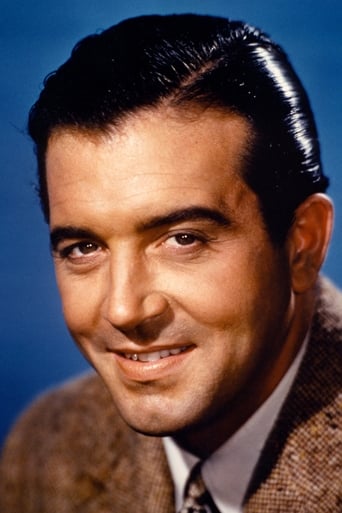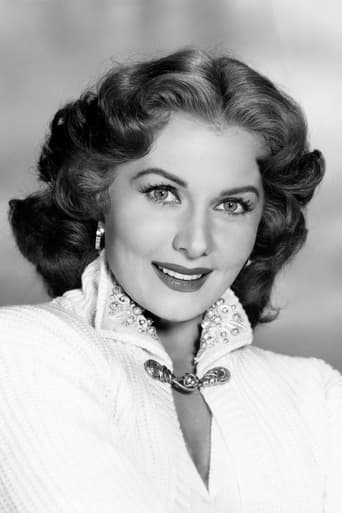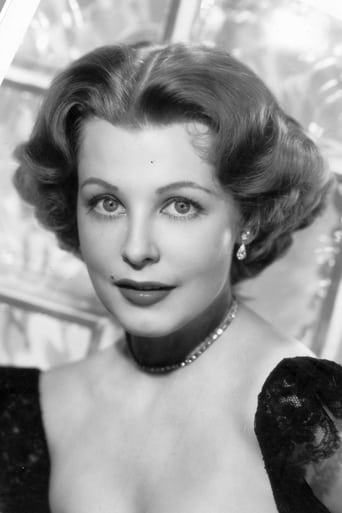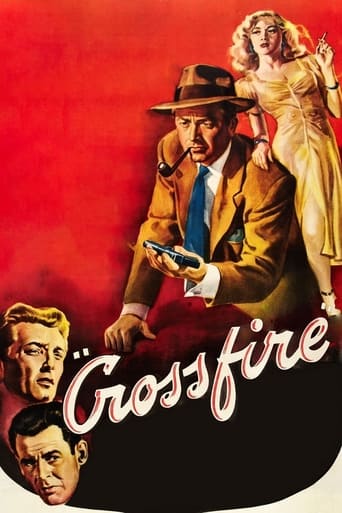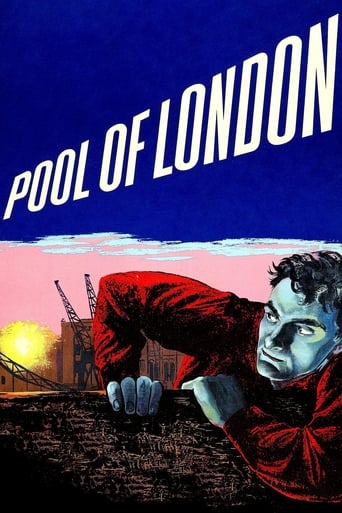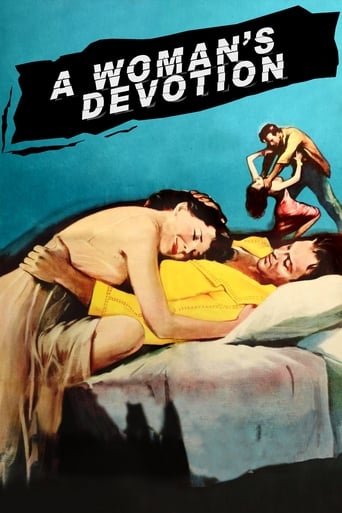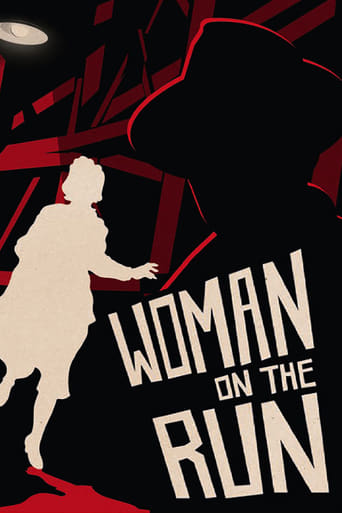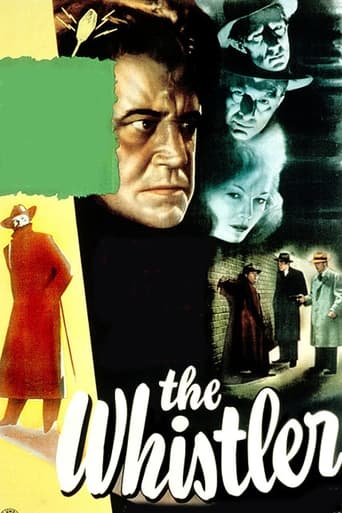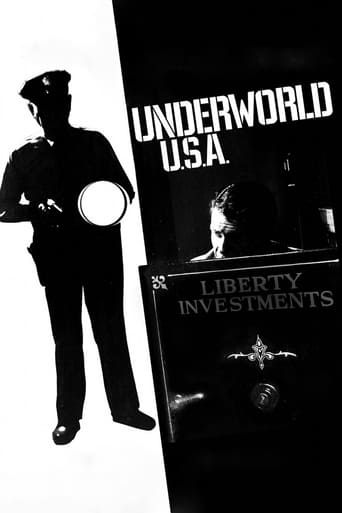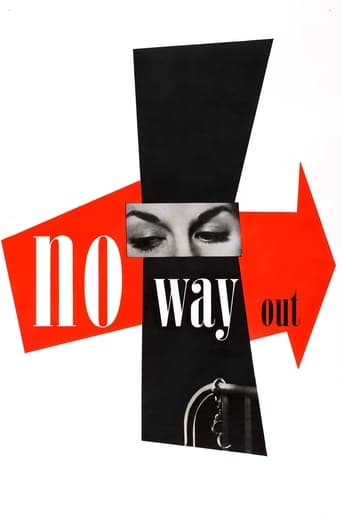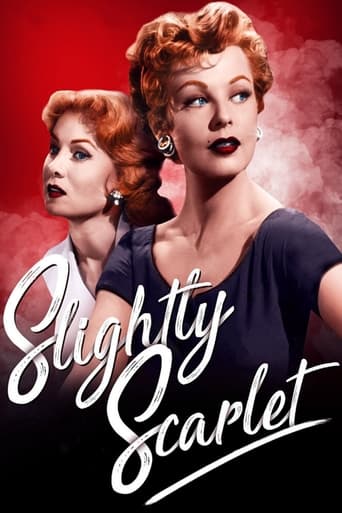

Slightly Scarlet (1956)
Kleptomaniac Dorothy Lyons is paroled from prison into the custody of her sister June, secretary to "reform" politician Frank Jansen. Ben Grace, associate of crime boss Sol "Solly" Caspar, sees this as a way to smear Jansen's campaign. Seductive Dorothy will do anything to get what she wants, which includes having a good time with Ben-- whom June is now in love with.
Watch Trailer
Cast


Similar titles
Reviews
Slightly Scarlet is directed by Allan Dwan and adapted to screenplay by Robert Blees from the novel Love's Lovely Counterfeit written by James M. Cain. It stars John Payne, Rhonda Fleming, Arlene Dahl, Kent Taylor and Ted de Corsa. A Technicolor/SuperScope production, music is scored by Louis Forbes and cinematography by John Alton. June Lyons (Fleming) is "secretary" to anti-crime campaigner Frank Jansen (Taylor), so with Jansen in the running for mayor, mob boss Solly Caspar (Corsa) looks for a way to smear Jansen. The chance arises by way of June's sister, Dorothy (Dahl), a Kleptomaniac just released from prison. So Caspar puts his main man on the case, Ben Grace (Payne), but bossing Grace around and then putting him in the middle of two fire- cracker sisters could prove detrimental to all. The story is altered from Cain's source and in truth what reads like a tricky plot, actually isn't all that it can be. Yet it's a feverish Technicolor noir, proof positive that in the right photographic/director hands, noir can thrive away from the monochrome. It plays out its tale in a whirl of simmering passions and wonderfully lurid suggestions, sparkled by eye scorching photography and a deliriously devilish production design. Psychological smarts are in the mix, with no easy answers put forward to character's outcomes, while in true noir fashion all principal characters are hard to like or are intriguingly flawed. John Alton is the key hand here, he brings rich colours to the fore whilst ensuring that light and shadow techniques are not compromised. Macho conversations are spun out in darkened rooms, the colour black prominent, foreboding like, while the home of the two flame haired sisters is adorned with purposely garish blues, reds, oranges and greens. Clothes are important to the sexuality pulsing in the piece. The girls dressed up in a number of fetching (colourful obviously) ensembles, with wide V necked sweaters, figure hugging skirts, bullet bras, leopard skin bikini and see-thru nighties! While a couple of phallic symbols form part of the art design just in case you need reminding that sex is a big issue here. Suggestive scenes are within, usually involving Dorothy who mixes Kleptomania with an obvious kink for Nymphomania. Watch how she strokes a pillow in the background as her sister engages Ben in heated conversation, how she looks as she holds a Harpoon Spear Gun in her hands (in that leopard skin bikini), or a quite delicious sequence on a couch, legs akimbo and a back scratcher used to tantalising effect. Wow! It has flaws for sure, mind. The Kleptomania/Nymphomania angle is not fully explored (ineviatbly for the period), Corsa barely convinces as the head villain, Forbes is not sure how to score it! And there are missed opportunities unbound as regards triangles involving Ben, June and Frank and also Ben, June and Dorothy. But this is still a delightful Technicolor noir, lush, lurid and deftly sordid. 8/10
Noir is by definition loopy; dead protagonists narrating from inside a pool, or showing up in a police station to report their own murder, the genre usually tangles its narratives in the steaming bedsheets of an emotional hotbed. We just writhe with them. In the best noirs, we writhe with them in the effort to disentangle ourselves from the cosmic strings that pull us.This is seriously loopy stuff, albeit awkwardly incompetent compared to the searing visions of Sunset Blvd. There is a protagonist who starts out a henchman of the evil kingpin, redeems himself, only to assume his place. Eventually he runs off like a scoundrel - he just isn't carrying this in any way.There is the convoluted plot about scheming and political intrigue in sunny California. Greed and ambition, the tropes. It's a far-fetched, dimestore thing, the kind of which James Ellroy would later simply obliterate as perversely glamorous background against senseless violence.Two things that strike some spark, one is the the two flaming redheads, sisters looking through sex for an entry into the world of money and standing. One is a kleptomaniac fresh out of prison, who wants to steal the other's man. They both sizzle in skimpy shorts and revealing dresses, sultry and dangerous like cutouts from the pages of a pinup comic.And there is the architecture that upends everything and nullifies it. Two houses, impossibly large and drowned in extravagant decoration. One of them is kept by a secretary, a really curious place to be sustained at a secretary's salary. But it's precisely this that is the movie's token, the candy-colored movie fantasy where everything is so simplistically possible and the small nuance of life is sacrificed for the sake of blistering outbursts. The wild colors, curtesy of famous DP John Alton, abet the artificial passions and overwrought cruelties.
I rather like the director, Allan Dwan, because he was a no-nonsense guy who was in the movie business from the beginning. Nothing pretentious or arty. Yet this movie sucks. It should open with some guy dressed in rags, tinkling a bell, chanting "B Feature." There's no sign of imagination and the story -- from James M. Cain -- is pedestrian. But then everything is dull, from the score to the photography.Arlene Dahl is the bad girl. We know it at once because the camera cuts from a sign ("Woman's Prison") to Dahl being picked up at the gate by her equally red-haired and devoted sister, Rhonda Fleming. Arlene Dahl and Rhonda Fleming. Two aces.Dahl, without being the least angry, blames Fleming for not having enough money to get her out of jail for theft. Fleming is happy and solicitous. When they reach Fleming's home -- she's a secretary to a mayoral candidate in Bay City -- Dahl heads at once for the booze while the morally upright Fleming refuses a drink in the most polite manner.You ought to see Fleming's house. She's a secretary but she lives in a grand estate that looks like it might have been an apartment set aside for Frank Sinatra in Las Vegas. Every set looks just as opulent and tasteless. It doesn't matter whether it's a rich guy's house or somebody's office. It's as if they changed the shape of the room but just shifted the accouterments from one set to the next. Except for a few minutes the whole movie is shot on a sound stage.Dwan shows no interest in the production. It's all functional and lapses into cliché at every opportunity. If Dahl wants to admire herself in the mirror, she looks into the mirror at an angle, so that she's not really seeing herself, only the camera lens.There's a good guy and a bad guy. One of them (Ted de Corsia) is named Solly Kaspar. The other (Payne) is named Ben Grace. Guess which is the good guy and which is the bad guy.The plot has the ambitious Payne taking over the politically influential gang of de Corsia. There is a conflict. The two red heads are dispensable, and both of them have about as much talent as you'd find in a community college play somewhere in Cranford, New Jersey. It's not just the actresses though; it's the roles as written. Fleming has unbelievable devotion to her unbalanced sister. Yes, the heart has its reasons that the mind will never know, but the reasons are stupid.Watch it if you like, but it's not as carefully done as, say, any early episode of "Law & Order."
"You're not good; you're not bad. You're a chiseler, out for anything you can get."So, says Solly Kaspar, crime boss of Bay City, of Ben Grace, the anti-hero of this story, adapted from James M. Cain's Love's Lovely Counterfeit. What holds our interest in this story is we're never quite sure what to make of Grace.There's an upcoming election and crime boss Kasper does not want the reform candidate to win, so Kasper strongarms the newspaper publisher backing him, and in the process kills him.Grace exposes Kasper, forcing Solly to flee to Mexico, and insuring the election of Frank Jansen, the reform candidate. He uses his influence with Jansen to get an honest police lieutenant friend of his appointed Chief of Police.Good guy, right?Then later in this movie he's seen giving orders to Solly's men, going over Solly's books, and positioning himself as Solly's successor. He calls his friend,the chief of police, and demands that his girlfriend's sister who was recently arrested be released without being charged, and so we begin to believe we've misjudged ol' Ben. He's just a hood, a little brighter than most, a little smoother than most, but in the end, no different from Solly Kasper.Bad guy, right?Well, we're not sure, because Grace isn't sure. Reform mayoral candidate, soon to be mayor, Frank Jansen has an assistant, June Lyons. On a 1 to 10 scale, Ms. Lyons, with her flaming red hair, and blazing headlights (think Good Girl art) is an 11. Rhonda Fleming never looked better, and Arlene Dahl as her sister, Dorothy Lyons, was equally stunning. But, back to Grace. He is falling for June, and June is a thoroughly decent girl, whose better nature seems to affect him.In the end, however, Grace's schemes come to naught. Jansen who really is a reform candidate orders Dorothy be tried for her crimes. Solly Kasper returns wanting to take over as rackets boss, and Ben Grace is forced to run. Here's where we see his true character, when he scrounges as much of Solly's money as he can and invites his girlfriend to go on the run with him (she declines).Solly Kasper was right all along. He really is just a chiseler, out for whatever he can get. Major disappointment, as in the end, Ben Grace disappoints not just his girlfriend, but the audience as well.This is a beautifully photographed movie in full technicolor. The sets are a wonderful amalgam of art deco - rococo excess. Others here have pointed out how garish everything looked. I didn't find it so. I thought it was beautiful. Certainly, the eye candy was stunning. There aren't any two actresses today who could team as good girl - bad girl siblings the way Fleming and Dahl did. Maybe Julianne Moore and Debra Messing, but they wouldn't look as good. The movie's high marks for visual style are undermined by its low marks for aimless, meandering story. 6 out of 10.


